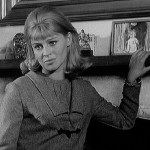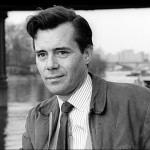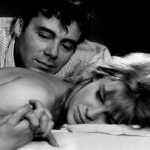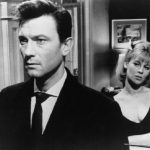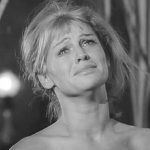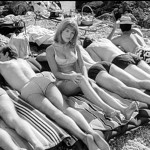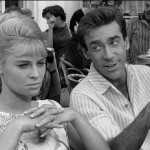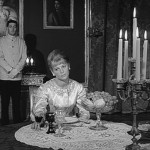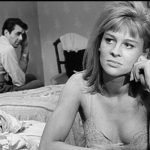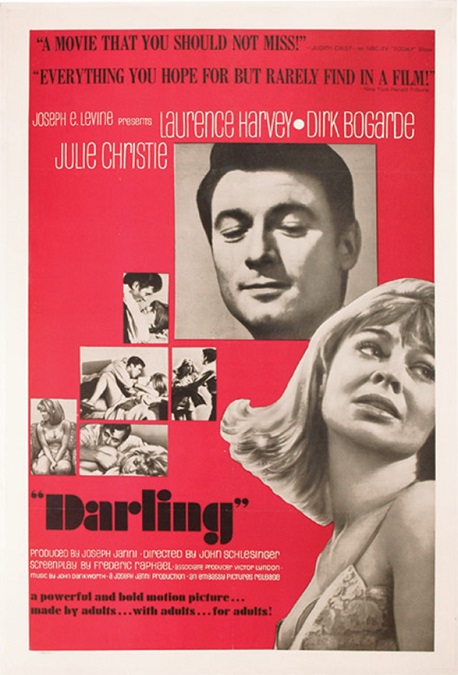
Darling – 1965
I’m honestly having trouble figuring this movie out. What was the point? What was its message? What theme was it trying to explore or what story was it trying to tell? It isn’t clearly apparent. But I think I have figured it out. It was trying to encapsulate the essence of the 1960s through the character of Diana Scott, a young British girl played by Julie Christie. She is mod and hip. She is completely ruled by her emotions and her flights of fancy. She tries new things, whatever catcher her attention, and then gets bored with them easily, always looking for what is around the next corner.
Nowhere is this more apparent than in her choices of lovers. She moves from one man to another in fits of restlessness, regardless of the consequences. The concept of free love was obvious and I have to give this film credit for being daring in its portrayal of both women and homosexuals as overtly sexual beings. This is the first Best Picture nominee that has done so in a serious and realistic way.
The character of Diana Scott is an actress who meets many men in her profession. Some of them are ordinary, but some of them are powerful. She starts off as an innocent and faithful young wife of a man who she considers to be an immature child. But as she begins to explore her own sexuality, she finds herself attracted to men who have position and status. She is a serial social climber.
While still married, she starts an affair with Robert Gold, played by Dirk Bogarde, a journalist. He teaches her about real love, though she is too immature to realize its significance. She is a jealous lover, though she claims to be anything but. Eventually she becomes bored with him and moves on to Miles Brand, played by Laurence Harvey, a powerful advertising executive. Unfortunately, Miles is only able to love himself, but he does introduce Diana to sexual liberation. He takes her to live sex shows and orgies, which she finds vaguely disgusting, but she proves that she can keep up with the experience. Robert learns of her unfaithfulness and leaves her.
Each lover strips away more and more of her innocence by introducing her to new ideas and experiences. Eventually, she climbs to the top of the social ladder. She lands an Italian prince named Cesar, played by Jose Luis de Vilallonga who adores her and she becomes a princess. But as I think about it, I find that in the end, she doesn’t like where she ends up. She discovers that the relationship she truly wants is the one in which there was real love. She wants Robert.
The film also touched on issues of social classes, which has always been incredibly important to the British. It is there, but it is overshadowed by the more prominent story of Diana and her rise to the top. There were scenes and images that were shown in passing that displayed the hypocrisy and decadence of the upper class, but they didn’t seem to have that much significance to Diana and her story, which was, after all, the main story.
Christie did a good enough job. She certainly had the right look for the role. She was beautiful, and she is a competent actress. But something I can’t exactly put my finger on gives me pause. Sure, she won the Academy award for Best Actress for her performance, but I can’t help thinking that something was missing. For the life of me, I can’t figure out what it was.
I also thought that Dirk Bogarde did a fantastic job as the tragic character of Robert. His character was mistreated and emotionally thrashed, sad, lonely, jealous, angry, and everything in between, and Bogarde made it all look believable. He was particularly good at the end when he drives Diana to the airport to callously send her back to her gilded but unhappy cage in Italy.
And one last thing I’d like to mention is that I thought the film would have been so much better in color. One of the things that the film tried so hard to display was the trendy fashions of the 60s. The 60s was a time of innovation and experimentation in fashion and bright colors were an important part of that. That wonderful visual aspect was completely lost because the movie was filmed in black and white.
